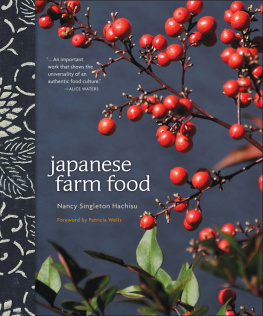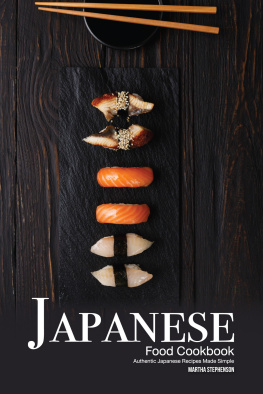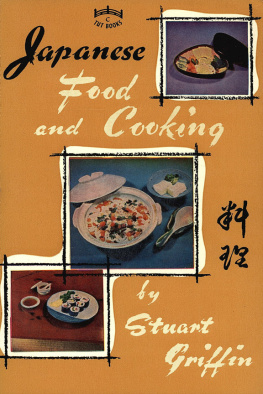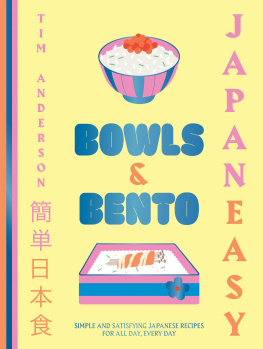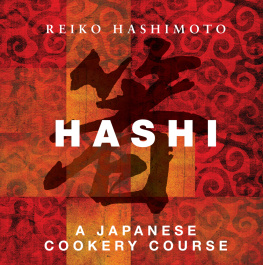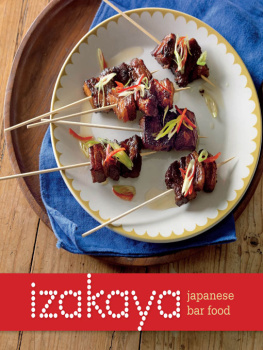Japanese Farm Food text copyright 2012 by Nancy Singleton Hachisu. Photography copyright 2012 by Kenji Miura. All rights reserved. No part of this book may be used or reproduced in any manner whatsoever without written permission except in the case of reprints in the context of reviews.
Andrews McMeel Publishing, LLC
an Andrews McMeel Universal company
1130 Walnut Street, Kansas City, Missouri 64106
www.andrewsmcmeel.com
ISBN: 978-1-4494-1830-4
Library of Congress Control Number: 2011944586
www.nancysingletonhachisu.com
Design: Julie Barnes and Diane Marsh
Photography: Kenji Miura
Cover design by Julie Barnes
Cover photography by Kenji Miura
Additional photography:
Kelly Ishikawa: .
Japanese editorial content and consulting: Kim Schuefftan
ATTENTION: SCHOOLS AND BUSINESSES
Andrews McMeel books are available at quantity discounts with bulk purchase for educational, business, or sales promotional use. For information, please e-mail the Andrews McMeel Publishing Special Sales Department:
CONTENTS
Where Is Home?
Japanese farmhouses are built with posts and beams, though one main post (the daikoku bashira ) is the center of the structure. The post that runs through the living room up to our bedroom is made of Japanese cypress. When Tadaaki was a boy, he remembers his grandmother rubbing the post with sesame oil to enhance the grain of this treasured pillar that holds up the house. While the rest of the beams and posts are typically made from rougher cuts or recycled wood, the Japanese carpenter selects a particularly beautiful piece of wood with a distinct personality for the main bearing post of a house.
I often feel like that post is the backbone of our family, and the house is the frame that keeps us together. So when I go out from the house, in some way I am without my center. That does not mean I experience some wrenching sensation when I finally heave myself onto the bus bound for Narita airport, bags stowed and airplane sandwiches on ice. Strangely, I leave easily. It is the coming back that is hard. Funny, the words used to describe this process: I am a registered alien and have a reentry permit to come back into Japan. In many, many senses of the word, reentry does prove to be a jarring transition.
The house almost seems to have spurned me. Somehow life has gone on without me; there are changes that Tadaaki has effected in my absencesome not so subtle. The clutter has grown, and the same things that were on the counter when I left dont appear to have shifted position. In one sense, life has stood still, but in another sense it has taken another direction and my space has closed up, leaving me almost an outsider.
One fall had been particularly busy with trips abroad. I spent a couple of weeks interning in the kitchen at Chez Panisse in September, ten days in Italy for Slow Food in October, and then two weeks in California to visit family and attend a Japanese food event at the CIA in Napa. When I got back from Italy, I found a dog in my kitchen. Tadaaki had decided to give himself a dog for his birthday. Never mind that I had strongly vetoed the idea when Matthew began lobbying for a dog a few years previously.

When the boys were small, the need to get out of Japan mounted like a pressure cooker. The longest time between trips was an unbearable eighteen months. In those days, the stress of running a small business, demands of farm life, bringing up bicultural children, and living as a foreigner in Japan were sometimes too much to endure. These days, Im older, hopefully wiser, but certainly more prosaic. I dont need to get out of Japan anymore, but I am pulled by the feeling of being connected to a larger world food community, and those bonds draw me to Berkeley, California, or Portland, Oregon, and sometimes to the countryside of France or Italy. In those places I am quasi-normal and dont stand out (much).
Several years ago Christopher told me he was done going to Italy or France because we only moved house, so to speak. We had the same daily life in Italy or France that we had in Japan: hang around the house, read, watch videos, and eat good food. The big difference he overlooked was that although this was his daily life in Japan, mine was not one of leisure, so for me this routine was heaven. Im not a fan of sightseeing; I go abroad for the chance to eat a favorite cooks food and a chance to use a foreign language (other than Japanese). And I go for the guilt-free ability to hang around and be lazy (though these days, I often write all day and I dont feel at all guilty about being lazy).
Now that my originally-homeschooled sons are all in school, I miss that they dont come with me, though I carry the memories I had with them. That fall trip to Italy was the first without any of the boys, but I retraced our steps, staying in our favorite room in the castle and eating at our favorite restaurant, La Libera. In my transits between Pollenzo and Alba, I often found myself taking a wrong turn. But with those wrong turns came an accompanying feeling of warmth from that familiar feeling of getting lost in the same spot, that feeling of Ive been here before accompanied by a strange impression of being home.
I thought about that sensation over the course of the following weeks and realized that despite my visceral connection to the old Japanese farmhouse in which I live, I also had a few other spots in the world that conjured up in me a different sense of home. And all of those places are where I spent time with my boys, away from Japan and away from them being predominantly Japanese. I will always be the odd one here in Japan, and maybe I will always be the odd one in other countries, but somehow in California, Italy, or France, I introduced another world to my boys, and we shared that world in a different way than we can ever share Japan. Because in Japan, their father is the conduit to how they enter society, but in foreign countries I am. And I liked that feeling of being in charge and that feeling of being completely comfortable outside in the outside world. My outside world.
But once again I am homeinstalled in the house. Writing at my laptop, Ive taken back possession. Sick of the dog dishes sloshing water on the floor, I moved them out of the way, but when no one is looking I give that incorrigible black Lab of Tadaakis a surreptitious pat. Her name is Hana, but for now I call her Dog.
PANTRY
Perhaps the most intimidating aspect of cooking food from another culture is the daunting number of unfamiliar ingredients needed to make many dishes. Not so with Japanese farm foodwith only miso or soy sauce in your kitchen, you can make stir-fries from farmers market vegetables. Many Japanese ingredients have incomprehensible labels full of kanji characters. Off-putting, to say the least. But I have found the best-quality versions of most of the items essential for a Japanese pantry are available through macrobiotic Internet mail-order sites, such as Gold Mine Natural Food Company (). Any other ingredients can be found at a Japanese (or Asian) grocery store.
I visited several Japanese grocery stores in the San Francisco Bay Area and Portland, Oregon, for the purpose of researching this book. My advice to you when standing in front of a shelf of nori, or konbu , or whatever: Pick the one that has the coolest packaging or looks most esthetically (beautifully) Japanese. I would steer clear of messy, gaudy labels or food that lists more than a small number of ingredients. Also I would avoid anything labeled with (amino); that indicates the presence of MSG. I have organized the Pantry section by order of importance, more as a reference than as a must-have list for your kitchen. The basic Japanese ingredients you will need for the recipes in this book are miso, soy sauce, katsuobushi , konbu, rice vinegar, sake, hon mirin , and of course, japonica rice. Your food will only be as good as the ingredients you choose, so choose wisely. Organic, small-producer miso and soy sauce may cost double the industrially produced ones. But consider the quantity of these condiments that you put into any given dishmerely tablespoonswhich translates into but a few pennies. Beyond that, you will need top-quality sea salt; a very good, bright, clear oil, such as rapeseed; good-tasting flour (preferably unbleached and organic); and organic sugar. After that, get thee to the famers market, butcher, or fish market and buy whats in season and looks good. Simple.

